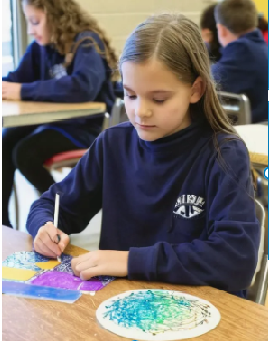Check Out the Effective Program ‘Coping Cat’ to Reduce Anxiety in Youth

|
Getting your Trinity Audio player ready...
|
What is the Coping Cat Program?
The Coping Cat Program, created by Philip C. Kendall, Ph.D., ABPP and Kristina A. Hedtke, M.A. is a research-based cognitive-behavioral therapy intervention (cognitive behavioral therapy focuses on exploring relationships among a person’s thoughts, feelings and behaviors in order to help them feel better/cope better).
Coping Cat helps children recognize and analyze their anxious feelings and develop strategies to cope with situations that may provoke anxiety. The program focuses on four connected components:
(1) recognizing anxious feelings and the physical reactions associated with anxiety
(2) clarifying feelings in situations which are anxiety-provoking
(3) developing a plan to cope (for example, changing anxious self-talk to coping self-talk, or determining what coping strategies might be effective)
(4) evaluating performance (how well are they doing with skills learned in the program) and administering self-reinforcement.
To read more about the research on the Coping Cat Program see Relevant Published, Peer-Reviewed Research at http://www.cebc4cw.org/program/coping-cat/detailed
What are the first steps coping cat uses to prevent or reduce feelings of anxiety?
One of the first steps in teaching coping skills in order to prevent or reduce feelings of anxiety is for the Coping Cat therapist to guide the child through understanding and analysis of their previous behavior in situations in which the child felt anxious, and to develop expectations for how the child can react/behave in future anxiety-provoking situations. This is done through the guidance of the Coping Cat Workbook.
What age is the Coping Cat Program designed for?
The Coping Cat Workbook is designed for children ages 8 to 13 and the C.A.T. Project workbook is designed for children ages 14 to 17. The only difference between the C.A.T. Project and the Coping Cat Workbook is the use of developmentally appropriate pictures and examples for older ages.
You May Also Like: Talk Space Therapy Onlne
What is the program design for coping cat?
The Coping Cat Program provides children with information about anxiety, and equips them with ways of coping with situations that caused anxiety or fear in the past. Behavioral training strategies are implemented such as:
- cognitive restructuring (a psycho-therapeutic process of learning to identify and dispute irrational or maladaptive thoughts known as cognitive distortions)
- modeling (the therapist demonstrates how to use the coping skills)
- guided imagery (guided imagery is a technique in which mental health professionals help individuals in therapy focus on mental images in order to evoke feelings of relaxation)
- simulation (child and therapist act out a real-life situation that may cause the child anxiety, in order to practice exposure and coping skills)
- real-life exposure to an anxiety producing stimulus
- role-playing (again, child and therapist may act out anxiety provoking situations, but child/therapist may play different characters)
- relaxation training (e.g., yoga, muscle relaxation, meditation)
- contingent reinforcement (the child learns how to reward him/herself for successfully using the strategies learned)
- children are taught how to verbally reinforce their own successful coping and are encouraged to practice using the coping skills when anxiety-provoking situations arise.
Who can implement the Coping Cat Program?
The Coping Cat Program (and the C.A.T. Project workbook) can be implemented by any mental health therapist or counselor working with a child such as a psychologist, social worker, school counselor, behavioral specialist, therapeutic support staff (TSS), or mobile therapist. The program is typically implemented over 16 weeks.
The computer-assisted intervention, Camp Cope-a-Lot, is 12 sessions with less than half of the sessions requiring a professional, so parents can implement several of the sessions themselves; however, Camp Cope-a-Lot is significantly more expensive than the Coping Cat Program and the C.A.T. Project workbook.
There is also a supplemental Parent Companion Coping Cat Book. The Parent Companion educates parents & caregivers about the strategies that will be utilized with their child(ren) as they complete the program.
The Parent Companion talks about the nature of anxiety, the treatment of anxiety, and how parents can be involved in their child s treatment.
This resource includes information about identifying physical responses to anxiety. It also discusses strategies to cope with a potentially anxious situation or thought such as relaxation techniques, engaging in problem-solving, and approaching rather than avoiding anxiety-provoking situations.
Who provides funding for the Coping Cat Program?
Sources for funding of the Coping Cat Program and related programs may include school districts, mental health agencies, and private service providers.
Thank you for visiting Education and Behavior. We are a free resource for parents, caregivers, therapists, and educators providing academic, behavioral, and social-emotional support for children. Keeping us on the same page for children!
You Might Also Be Interested In:
- 6 Ways to Encourage Health and Happiness in Your Child
- 9 Tips to Help Your Child Ease Their Fear of the Dentist
- When Should a Child Be Evaluated for an Emotional Disturbance in School?
- I Am Going to the Dentist (A Story to Prepare Children for Dental Appointments)
- Strategies for Schools to Help Children with Separation Anxiety
- 8 Ways I Battle My Depression Every Day and Win!










